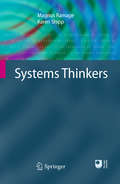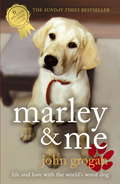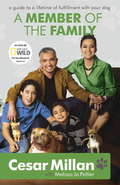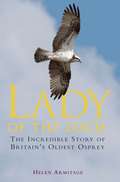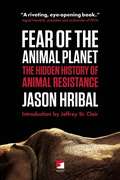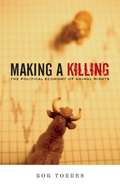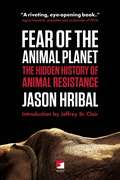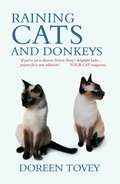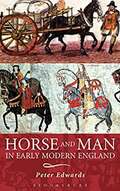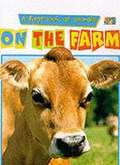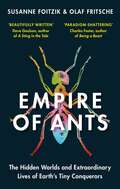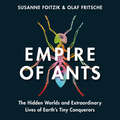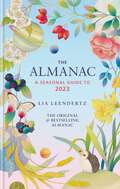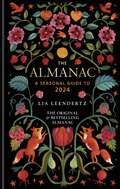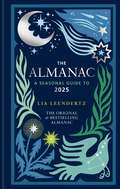- Table View
- List View
Systems Thinkers
by Karen Shipp Magnus RamageThis book presents a biographical history of the field of systems thinking, by examining the life and work of thirty of its major thinkers. It discusses each thinker's key contributions, the way this contribution was expressed in practice and the relationship between their life and ideas. This discussion is supported by an extract from the thinker's own writing, to give a flavour of their work and to give readers a sense of which thinkers are most relevant to their own interests.
Marley & Me
by John GroganTHE NO. 1 SUNDAY TIMES BESTSELLER THAT MOVED DOG LOVERS ALL OVER THE WORLD**NOW A MAJOR MOTION PICTURE, STARRING OWEN WILSON AND JENNIFER ANISTON**'A book with intense appeal . . . tenderly follows its subject from sunrise to sunset' New York Times'Not just a funny dog story . . . It's a universal story of family life and a publishing sensation' The Times'Made me laugh so much I pulled a muscle in my solar plexus' Daily Mail'A wonderful, moving book that even non-dog-lovers cannot fail to enjoy' Mail on Sunday* * * * * * The original book that moved millions of readers around the world and that inspired the major motion picture of the same name starring Owen Wilson and Jennifer Aniston.This No. 1 Sunday Times bestseller tells the heart-warming tale of how a wiggly yellow fur ball of a puppy could grow into a barrelling, ninety-seven pound stramroller of a Labrador retriever who would prove that unconditional love comes in many forms. John and Jenny were just beginning their life together. They were young and in love, with a perfect little house and not a care in the world. Along comes Marley, mischievous, hyperactive and so unruly he is expelled from obedience school. How could they possibly know that this incorrigible dog could teach them more about love for life than they could hope to teach him?Since becoming a major motion picture, starring Jennifer Aniston and Owen Wilson, this heart-warming and unforgettable story of a family and their haphazard dog has become a timeless family favourite.
A Member of the Family: Cesar Millan's Guide to a Lifetime of Fulfillment with Your Dog
by Cesar MillanFor current dog owners or those thinking about getting a dog, this is the ultimate guidebook covering all of the essentials and answering all of the most commonly asked questions about living with and caring for a healthy, happy dog. Including how to: - select the right breed, and more importantly, the right energy for your own unique needs- introduce your new dog to your family, especially children, and other pets- set the rules of the house- learn to fulfill your dog's needs, not just your own- understand what your dog is trying to tell you through his or her behaviour- learn to manage a dog with 'issues'- find the right vetand much more! Filled with photographs, clear instructions, and resources for every dilemma, this book will give families everything they need to build a long and satisfying life with their new best friend.
Girl Meets Ape
by Chrissie ManbyHe's the King of the Swingers. But she's the Ice Queen.When Dr Jennifer Niederhauser becomes head of the chimpanzee project at Prowdes Animal Sanctuary, the uptight young zoologist looks forward to making her mark in the conservation world. But the regime is ramshackle, the chimpanzees uncontrollable and her first meeting with head keeper Guy Gibson finds him naked and covered in baby oil.She decides never to work with animals or the childish again. But she may not have a job for much longer anyway - Prowdes is in big financial trouble.Hope comes in the form of a TV documentary. Prowdes needs the money and exposure but there's a problem. The show's presenter, chimpanzee expert Dr Timothy Lauder, is Jennifer's ex-boyfriend. Things could get hairy. . .Praise for Chrissie Manby'A fast-track, fun romance full of monkey business' - Daily Mail'A deliciously comical novel' - Heat
Girl Meets Ape
by Chrissie ManbyHe's the King of the Swingers. But she's the Ice Queen.When Dr Jennifer Niederhauser becomes head of the chimpanzee project at Prowdes Animal Sanctuary, the uptight young zoologist looks forward to making her mark in the conservation world. But the regime is ramshackle, the chimpanzees uncontrollable and her first meeting with head keeper Guy Gibson finds him naked and covered in baby oil.She decides never to work with animals or the childish again. But she may not have a job for much longer anyway - Prowdes is in big financial trouble.Hope comes in the form of a TV documentary. Prowdes needs the money and exposure but there's a problem. The show's presenter, chimpanzee expert Dr Timothy Lauder, is Jennifer's ex-boyfriend. Things could get hairy. . .Praise for Chrissie Manby'A fast-track, fun romance full of monkey business' - Daily Mail'A deliciously comical novel' - Heat
Lady of the Loch: The Incredible Story Of Britain's Oldest Osprey
by Helen ArmitageDuring the last decade, the osprey has risen, phoenix-like, from the ashes - once extinct in Britain, now returned as a powerful symbol of hope. The opreys' story is a moving tale of triumph over adversity. Their slow but sure resurgence has attracted huge public interest and support; that of one bird in particular, Lady, at 25, Britain's oldest breeding osprey, has tugged at the world's heartstrings.For the past twenty years, Lady has made the 3000-mile journey from Africa back to Scotland, her nest and her mate. In March 2010, she produced an egg for a record-breaking 20th year; despite her weakened state throughout that summer, and with the stalwart assistance of her youthful mate, the chicks fledged successfully. But how many more times can Lady defy the odds; will the spring see her return, as, happily, it will so many other ospreys?
Lady of the Loch: The Incredible Story of Britain's Oldest Osprey
by Helen ArmitageDuring the last decade, the osprey has risen, phoenix-like, from the ashes - once extinct in Britain, now returned as a powerful symbol of hope. The opreys' story is a moving tale of triumph over adversity. Their slow but sure resurgence has attracted huge public interest and support; that of one bird in particular, Lady, at 25, Britain's oldest breeding osprey, has tugged at the world's heartstrings.For the past twenty years, Lady has made the 3000-mile journey from Africa back to Scotland, her nest and her mate. In March 2010, she produced an egg for a record-breaking 20th year; despite her weakened state throughout that summer, and with the stalwart assistance of her youthful mate, the chicks fledged successfully. But how many more times can Lady defy the odds; will the spring see her return, as, happily, it will so many other ospreys?
Fear of the Animal Planet: The Hidden History of Animal Resistance
by Jason HribalA Siberian tiger at the San Francisco Zoo leaps a 12-foot high wall and mauls three visitors who had been tormenting her, killing one. A circus elephant tramples and gores a sadistic trainer, who had repeatedly fed her lit cigarettes. A pair of orangutans at the San Diego Zoo steal a crowbar and screwdriver and breakout of their enclosure. An orca at Sea World snatches his trainer into the pool and holds her underwater until she drowns. What's going on here? Are these mere accidents? Simply cases of animals acting on instinct? That's what the zoos and animal theme parks would have you believe. But historian Jason Hribal tells a different story. In the most provocative book on animal rights since Peter Singer's Animal Liberation, Hribal argues persuasively that these escapes and attacks are deliberate, that the animals are acting with considered intent, that they are asserting their own desires for freedom.
Making A Killing
by Bob TorresSuggest to the average leftist that animals should be part of broader liberation struggles and--once they stop laughing--you'll find yourself casually dismissed. With a focus on labor, property, and the life of commodities, Making a Killing contains key insights into the broad nature of domination, power, and hierarchy. It explores the intersections between human and animal oppressions in relation to the exploitative dynamics of capitalism. Combining nuts-and-bolts Marxist political economy, a pluralistic anarchist critique, as well as a searing assessment of the animal rights movement, Bob Torres challenges conventional anti-capitalist thinking and convincingly advocates for the abolition of animals in industry--and on the dinner plate.Making A Killing is sure to spark wide debate in the animal rights and anarchist movements for years to come.Table Of Contents:I Taking Equality SeriouslyII Chained CommoditiesIII Property, Violence, and the Roots of OppressionIV Animal Rights and WrongsV You Cannot Buy the RevolutionAdvance praise for Making A Killing"Bob Torres' Making a Killing draws a very straight line between capitalism and the oppressive system of animal agribusiness. Drawing from social anarchist theory, Torres provides a convincing argument that in order to fight animal exploitation, we must also fight capitalism and, in doing so, animal rights activists will need to reconsider their methods and redirect their focus. While his critiques of the animal rights movements' large organizations may not earn him friends in high places, such considerations are crucial to keeping the movement on track and for preventing stagnation.Making a Killing is an important work from a new voice in animal advocacy that will surely spark heated discussions amongst activists from all corners of the movement."--Ryan MacMichael, vegblog.org"In Making A Killing: The Political Economy of Animal Rights, Bob Torres takes an important and timely look at the animal rights movement, calling for a synthetic approach to all oppression, human and animal. His analytical framework draws together Marxism, social anarchist theory, and an abolitionist approach to animal rights to provide a timely social analysis that will no doubt have profound effects on the animal rights movement literature."--Gary L. FrancioneDistinguished Professor of Law, Rutgers University"Bob Torres's socioeconomic analysis of nonhuman animal use is a welcome and important addition to the understanding of human-nonhuman relations at the beginning of the 21st century. In particular, Making a Killing, makes vital a contribution to understanding the role of the property status of animals and the continuing strength of various welfarist positions on the ethics--and indeed the economics--of the human utilisation of other animals. Making a Killing will become required reading for social scientists and others interested in modern social movements and the socioeconomic forces that shape their activities and their claims-making."--Dr. Roger Yates, Lecturer in sociology at University College, Dublin, Republic of Ireland"This is the book I've been waiting for. Making A Killing is a rare and powerful example of first-rate scholarship, a searing critique, and lively declaration of the rights of animals and humans. You will walk away from this book with a clear understanding as to why social justice movements for people must take animal rights seriously, and vice versa. Bob Torres has forever deepened my thinking about these relationships."--David Naguib Pellow, vegetarian, animal rights and anti-racist activist, and Professor of Ethnic Studies, University of California, San Diego; and author of Garbage Wars: The Struggle for Environmental Justice in Chicago and Resisting Global Toxics: Transnational Movements for Environmental JusticeBob Torres is assistant professor of sociology at St. Lawrence University, received his PhD from Cornell, and is co-author of Vegan Freak: Being Vegan in a Non-Vegan World. His writings have appeared in Critical Sociology, The Journal of Latinos and Education...
Fear of the Animal Planet
by Jason Hribal Jeffery St. ClairTaking the reader deep inside of the circus, the zoo, and similar operations, Fear of the Animal Planet provides a window into animal behavior: chimpanzees escape, elephants attack, orcas demand more food, and tigers refuse to perform. Indeed, these animals are rebelling with intent and purpose. They become true heroes and our understanding of them will never be the same.
Raining Cats and Donkeys
by Doreen ToveyLife is never a bed of roses for the Toveys and their beloved Siamese cats Solomon and Sheba. For one thing they've got Annabel the donkey to contend with! Filled with amusing anecdotes, 'Raining Cats and Donkeys' recalls the adventures and misadventures of the family and their adorable animals.
Horse and Man in Early Modern England
by Peter EdwardsHorses were used for many purposes in Shakespeare's England: for travel, either on horseback or in carriages, for haulage and for pleasure, and for work in the fields. The upper classes were closely involved with horses, for jousting, hunting and racing. Horses was also essential to any army, both as cavalry and to draw supplies and artillery. Horse ownership was, however, much more widespread than might be imagined. <p><p> Horse and Man in Early Modern England shows how, in pre-industrial England, horses were bred and trained, what they ate, how much they were worth, how long they lived, and what their owners thought of them. <p><p> While they were named individually, and sometimes became favourites, many were worked hard and poorly treated, leading to their early deaths. They were, nevertheless an essential part of the life of the time and are strikingly depicted in literature and art, as well in many other records.
Guiding Stars: The Guide Dogs for the Blind Association
by Peter IresonA selection of writings, recollections and images chosen to convey some of the joys and anxieties, achievements and disappointments experienced by the generations of people who have either used guide dogs or helped to provide them.
Harnessing Thought
by Bruce JohnsonThis book tries to give a psychological insight into the skillful and thoughtful mind of the guide dog. How does the young dog acquire the knowledge and skills to be a safe, fluent and confident guide? Is the dog capable of taking conscious decisions about alternative courses of action, predicting what is likely to happen next in a particular situation and of remembering how to respond to a wide variety of objects, people and events? These are questions that take us to the very forefront of our understanding of animal learning, consciousness and thought.
Showing to Win
by Carolyn HendersonBasic guide to showing horses, particularly in the United Kingdom.
On the Farm: A First Look at Animals
by Diane James Sara LynnDramatic photographs, charming illustrations and informative text give children essential first facts about the animal kingdom. Simple text explains how animals live, eat and tend to their young. A short quiz in the back of each book lets children test their new animal knowledge.
The Medieval Warhorse From Byzantium to the Crusades
by Ann HylandThe history and development of the medieval warhorse, its breeding and care.
In Search of the Missing: Working with Search and Rescue Dogs
by Mick Mccarthy Patricia AhernMick McCarthy has experienced first-hand the dangers, thrills, tragedies, and triumphs of search and rescue operations, which he has carried out on flood-swollen rivers, raging seas, through woodland, bog land, and on treacherous mountains, often in the dead of night. This book narrates the captivating story of his dogs, his life, and his adventures in the field, in search of missing persons.
Empire of Ants: The hidden worlds and extraordinary lives of Earth's tiny conquerors
by Olaf Fritsche Susanne Foitzik'Beautifully written and filled with mind-boggling wonders' - Dave Goulson, author of A Sting in the Tale'Thrilling, compellingly readable and paradigm-shattering' - Charles Foster, author of Being a Beast'Both expert and entertaining' - David Barrie, author of Incredible JourneysAnts have been walking the Earth since the age of the dinosaurs. Today there are one million ants for every one of us. The closer you get to ants, the more human they look: they build megacities, grow crops, raise livestock, tend their young and infirm, and even make vaccines. They also have a darker side: they wage war, enslave rivals and rebel against their oppressors. From fearsome army ants, who stage twelve-hour hunting raids where they devour thousands, to gentle leaf-cutters gardening in their peaceful underground kingdoms, every ant is engineered by nature to fulfil their particular role.Acclaimed biologist Susanne Foitzik has travelled the globe to study these master architects of Earth. Joined by journalist Olaf Fritsche, Foitzik invites readers deep into her world - in the field and in the lab - and will inspire new respect for ants as a global superpower.Fascinating and action-packed, Empire of Ants will open your eyes to the secret societies thriving right beneath your feet.
Empire of Ants: The hidden worlds and extraordinary lives of Earth's tiny conquerors
by Olaf Fritsche Susanne FoitzikAnts have been walking the Earth since the age of the dinosaurs. Today there are one million ants for every one of us. The closer you get to ants, the more human they look: they build megacities, grow crops, raise livestock, tend their young and infirm, and even make vaccines. They also have a darker side: they wage war, enslave rivals and rebel against their oppressors. From fearsome army ants, who stage twelve-hour hunting raids where they devour thousands, to gentle leafcutters gardening in their peaceful underground kingdoms, every ant is engineered by nature to fulfil their particular role.Acclaimed biologist Susanne Foitzik has travelled the globe to study these master architects of Earth. Joined by journalist Olaf Fritsche, Foitzik invites readers deep into her world - in the field and in the lab - and will inspire new respect for ants as a global superpower.Fascinating and action-packed, Empire of Ants will open your eyes to the secret societies thriving right beneath your feet.(p) Octopus Publishing Group 2021
The Almanac: THE SUNDAY TIMES BESTSELLER (Almanac)
by Lia LeendertzTHE ORIGINAL & SUNDAY TIMES BESTSELLING ALMANAC Reconnect with the seasons in Britain and Ireland with this month-by-month guide to the world around us - including key dates, tide tables and garden tasks; constellations and moon phases; sunrises, folk songs, seasonal recipes plus a 'bun of the month'; and - because 2023 will be a good year for planet spotting - the solar system and the zodiac.The Almanac: A Seasonal Guide to 2023 gives you the tools and inspiration you need to celebrate, mark and appreciate each month of the year in your own particular way. Divided into the 12 months, a set of tables each month gives it the feel and weight of a traditional almanac, providing practical information that gives access to the outdoors and the seasons, perfect for expeditions, meteor-spotting nights and beach holidays. There are also features on each month's unique nature, with this instalment following the swirling micro world of the garden pond through the year.You will find yourself referring to The Almanac all year long, revisiting it again and again, and looking forward to the next edition as the year draws to a close.This year's edition is illustrated by artist Whooli Chen.The geographical scope of The Almanac is Britain and IrelandPRAISE FOR THE ALMANAC:'Lia Leendertz's classic almanac never fails to delight' - The Herald'It's a perfect Christmas present' - Allan Jenkins, The Observer'The perfect companion to the seasons' - India Knight'Indispensable' - Sir Bob Geldof'This book is your bible' - The Independent'I love this gem of a book' - Cerys Matthews
The Almanac: THE SUNDAY TIMES BESTSELLER (Almanac)
by Lia LeendertzTHE ORIGINAL & SUNDAY TIMES BESTSELLING ALMANAC Reconnect with the seasons in Britain and Ireland with this month-by-month guide to the world around us - including key dates, tide tables and garden tasks; constellations and moon phases; sunrises, folk songs, seasonal recipes plus a 'bun of the month'; and - because 2023 will be a good year for planet spotting - the solar system and the zodiac.The Almanac: A Seasonal Guide to 2023 gives you the tools and inspiration you need to celebrate, mark and appreciate each month of the year in your own particular way. Divided into the 12 months, a set of tables each month gives it the feel and weight of a traditional almanac, providing practical information that gives access to the outdoors and the seasons, perfect for expeditions, meteor-spotting nights and beach holidays. There are also features on each month's unique nature, with this instalment following the swirling micro world of the garden pond through the year.You will find yourself referring to The Almanac all year long, revisiting it again and again, and looking forward to the next edition as the year draws to a close.This year's edition is illustrated by artist Whooli Chen.The geographical scope of The Almanac is Britain and IrelandPRAISE FOR THE ALMANAC:'Lia Leendertz's classic almanac never fails to delight' - The Herald'It's a perfect Christmas present' - Allan Jenkins, The Observer'The perfect companion to the seasons' - India Knight'Indispensable' - Sir Bob Geldof'This book is your bible' - The Independent'I love this gem of a book' - Cerys Matthews
The Almanac: A Seasonal Guide To 2018 (Almanac)
by Lia LeendertzTHE ORIGINAL & BESTSELLING ALMANACReconnect with the seasons in Britain and Ireland with this month-by-month guide to the world around us - including tide tables, sunrises and moon phases; garden feasts, wildlife and folklore; seasonal recipes, snacks and more.The Almanac: A Seasonal Guide to 2024 gives you the tools and inspiration you need to celebrate, mark and appreciate each month of the year in your own particular way.Divided into the 12 months, a set of tables each month gives it the feel and weight of a traditional almanac, providing practical information that gives access to the outdoors and the seasons, perfect for expeditions, meteor-spotting nights and beach holidays. This year's edition focuses on the natural wonders of the garden, celebrating the beautiful flora and fauna at your doorstep. There are also features on each month's unique nature, plus a flower and a snack of the month.You will find yourself referring to The Almanac all year long, revisiting it again and again, and looking forward to the next edition as the year draws to a close.PRAISE FOR THE ALMANAC:'Lia Leendertz's classic almanac never fails to delight' - The Herald'It's a perfect Christmas present' - Allan Jenkins, The Observer'The perfect companion to the seasons' - India Knight'Indispensable' - Sir Bob Geldof'This book is your bible' - The Independent'I love this gem of a book' - Cerys Matthews
The Almanac: A Seasonal Guide To 2018 (Almanac)
by Lia LeendertzTHE ORIGINAL & BESTSELLING ALMANACReconnect with the seasons in Britain and Ireland with this month-by-month guide to the world around us - including tide tables, sunrises and moon phases; garden feasts, wildlife and folklore; seasonal recipes, snacks and more.The Almanac: A Seasonal Guide to 2024 gives you the tools and inspiration you need to celebrate, mark and appreciate each month of the year in your own particular way.Divided into the 12 months, a set of tables each month gives it the feel and weight of a traditional almanac, providing practical information that gives access to the outdoors and the seasons, perfect for expeditions, meteor-spotting nights and beach holidays. This year's edition focuses on the natural wonders of the garden, celebrating the beautiful flora and fauna at your doorstep. There are also features on each month's unique nature, plus a flower and a snack of the month.You will find yourself referring to The Almanac all year long, revisiting it again and again, and looking forward to the next edition as the year draws to a close.PRAISE FOR THE ALMANAC:'Lia Leendertz's classic almanac never fails to delight' - The Herald'It's a perfect Christmas present' - Allan Jenkins, The Observer'The perfect companion to the seasons' - India Knight'Indispensable' - Sir Bob Geldof'This book is your bible' - The Independent'I love this gem of a book' - Cerys Matthews
The Almanac: A Seasonal Guide To 2018 (Almanac)
by Lia LeendertzThe original and bestselling almanacReconnect with the seasons in Britain and Ireland with this month-by-month guide to the world around us - including tide tables, sunrises and moon phases; wildlife and folklore; seasonal recipes and more.The Almanac: A Seasonal Guide to 2025 gives you the tools and inspiration you need to celebrate, mark and appreciate each month of the year in your own particular way.Divided into the 12 months, a set of tables each month gives it the feel and weight of a traditional almanac, providing practical information that gives access to the outdoors and the seasons, perfect for expeditions, meteor-spotting nights and beach holidays. And it's the ideal gift!You will find yourself referring to The Almanac all year long, revisiting it again and again, and looking forward to the next edition as the year draws to a close.PRAISE FOR THE ALMANAC:'Lia Leendertz's classic almanac never fails to delight' - The Herald'It's a perfect Christmas present' - Allan Jenkins, The Observer'The perfect companion to the seasons' - India Knight'Indispensable' - Sir Bob Geldof'This book is your bible' - The Independent'I love this gem of a book' - Cerys Matthews
